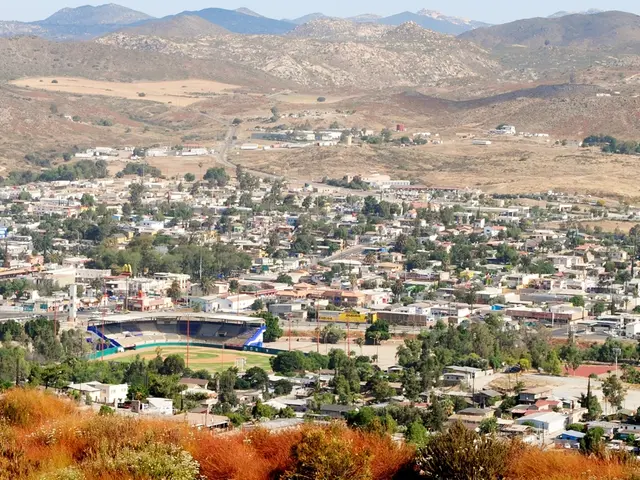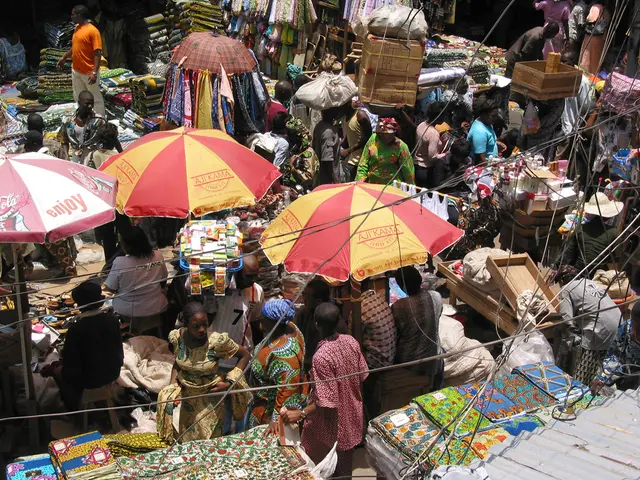Competition between India and China unfolds in shaping Africa's financial destiny
In the dynamic landscape of East Africa, two global powers are vying for economic dominance - India and China. Each country's approach offers a unique perspective on development and economic growth.
India's economic interests in Africa are deeply rooted in the continent's large population and growing demand for Indian products, particularly in sectors such as telecommunications and pharmaceuticals. Indian businesses, like Tata Group, Reliance Industries, and Bharti Airtel, are shaping the region's economic landscape through a market-oriented approach. These companies, which operate across countries like Kenya, Tanzania, and Uganda, are presenting a more sustainable strategy compared to China's top-down infrastructure approach.
India's connections with East Africa are more organic due to their link to market forces and socioeconomic ties unmoored from the directives of a monolithic party-state. This organic approach is reflected in India's focus on worker training and private partnerships, which builds stronger ties across Africa's economy. Moreover, India's impact will be felt longer and more sustainably in Africa due to its presence in sectors that are resilient and independent of the state.
On the other hand, China's political influence campaigns in the region are linked to BRI projects but have not significantly improved Beijing's image. China's economic model, with its potential to influence economies across the Indian Ocean littoral zone, could reinvigorate state-dominated economic models. However, China's debt to African countries makes the renminbi more attractive for repayments, but widespread use could increase China's bureaucratic power and authoritarianism.
China's infrastructure projects can generate anti-Chinese sentiment and hostility among the population, and its debt diplomacy allows it to exercise authority over elites. However, China's model of economic statecraft is less durable and less integrated into African business culture than India's approach. Chinese projects in Africa often spark local resistance and anti-China sentiment.
East Africa's gradual route of economic liberalization started in the 1990s, with Kenya being the most market-oriented economy. However, Africa's liberalization remains stunted in some countries like Ethiopia and Tanzania due to conflict and slow reform.
China's efforts to reshape East Africa's economic future to align with its own interests have several factors in its favor, such as its use of state-owned enterprises to develop infrastructure and its status as a leading foreign creditor for the region. However, India's more sustainable and market-oriented approach may offer a more promising path for long-term economic growth and development in East Africa.
In conclusion, the competition between India and China for economic influence in East Africa is a complex issue with far-reaching implications. While China's top-down approach offers quick results, India's more organic and sustainable strategy may prove more beneficial in the long run. As East Africa continues to liberalize its economy, the balance of power between these two nations will be an interesting development to watch.
Read also:
- Potential Consequences of Dismantling FEMA Vary Across States
- Railway line in Bavaria threatened by unstable slope - extensive construction site at risk
- Wind Farm Controversy on the Boundary of Laois and Kilkenny
- Puerto Rico's Climate Lawfare Campaign experiences another setback with the dismissal of its deals.




